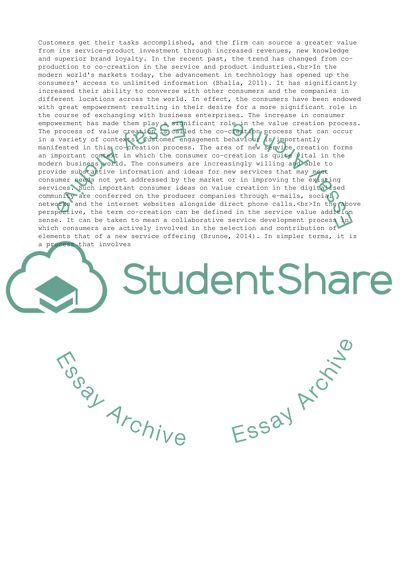Cite this document
(1 if a service involves a high degree of consumer co-creation, what Essay - 1, n.d.)
1 if a service involves a high degree of consumer co-creation, what Essay - 1. https://studentshare.org/management/1875476-1-if-a-service-involves-a-high-degree-of-consumer-co-creation-what-does-this-mean-for-the-design-and-development-of-new-services
1 if a service involves a high degree of consumer co-creation, what Essay - 1. https://studentshare.org/management/1875476-1-if-a-service-involves-a-high-degree-of-consumer-co-creation-what-does-this-mean-for-the-design-and-development-of-new-services
(1 If a Service Involves a High Degree of Consumer Co-Creation, What Essay - 1)
1 If a Service Involves a High Degree of Consumer Co-Creation, What Essay - 1. https://studentshare.org/management/1875476-1-if-a-service-involves-a-high-degree-of-consumer-co-creation-what-does-this-mean-for-the-design-and-development-of-new-services.
1 If a Service Involves a High Degree of Consumer Co-Creation, What Essay - 1. https://studentshare.org/management/1875476-1-if-a-service-involves-a-high-degree-of-consumer-co-creation-what-does-this-mean-for-the-design-and-development-of-new-services.
“1 If a Service Involves a High Degree of Consumer Co-Creation, What Essay - 1”. https://studentshare.org/management/1875476-1-if-a-service-involves-a-high-degree-of-consumer-co-creation-what-does-this-mean-for-the-design-and-development-of-new-services.


